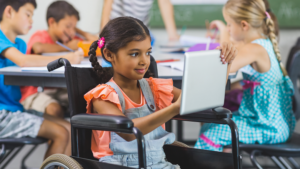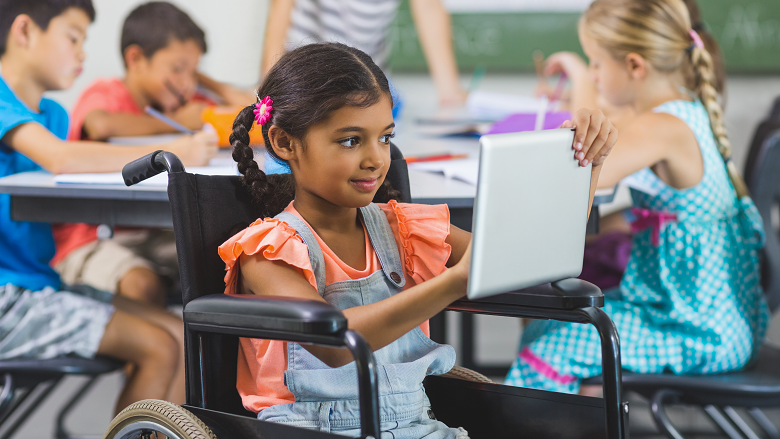The revolutionary approach of Inclusive Education in International Programs places a strong emphasis on providing all students, regardless of differences, with equal opportunity and access to high-quality instruction. As the world grows more interconnected, it is critical to provide inclusive learning environments in schools. Beyond simple integration, inclusive education aims to accept variety, make accommodations for different learning styles, and remove obstacles that prevent involvement.
It is impossible to overestimate the importance of implementing inclusive practices in the context of international projects. It also supports the development of a peaceful and cooperative international community in addition to being consistent with the ideals of equity and social justice.
This introduction lays the groundwork for a study of the many facets of Inclusive Education in International Programs, including its tenets, difficulties, and potential benefits for influencing global education trends. Embracing diversity in school is essential to creating a world that is actually inclusive and interconnected, not just a goal.

Inclusive Education in International Programs: A Revolutionary Power
It is more important than ever to provide a multicultural, cross-border education for a world that is ever more interconnected. The theory and practice of “Inclusive Education in International Programs” is a shining example of development, transforming the educational landscape to make it more accessible and equal for all.
Inclusive Education in International Programs: An Understanding
The phrase “Inclusive Education in International Programs” is more than just a catchphrase; it represents a fundamental change in how we see education in the world. Fundamentally, inclusive education aims to give all students the chance to succeed in the classroom, irrespective of their talents, backgrounds, or cultural origins. This attitude transcends national boundaries in the context of international projects, focusing on the establishment of a global community that respects and embraces variety.
Read Also: Employment Opportunities After Studying Abroad
Dismantling Obstacles to International Education Initiatives
The fact that “Inclusive Education in International Programs” aligns with the more general objectives of international education initiatives is one of its main contributions. The goals of these programs are to eliminate educational inequalities and advance equitable access to high-quality education for all.
Because inclusive education acknowledges the intrinsic importance of variety, it becomes the cornerstone of these initiatives. International programs can support the development of a talented, flexible, and internationally aware workforce by welcoming students with a range of backgrounds and abilities. This is a crucial need in order to meet the challenges of the twenty-first century.
Overcoming Implementation Challenges
Even while the idea of inclusive education is appealing, there are obstacles in the way of its actualization. Development may be hampered by educators’ and stakeholders’ ignorance of the benefits and guiding principles of inclusive methods. Creating inclusive learning settings is practically challenged by a lack of financial and infrastructural resources. To guarantee the effective execution of “Inclusive Education in International Programs,” it is important to surmount cultural prejudices and societal stigmas associated with diversity.
Techniques and Best Practices for International Effect
In order to advance “Inclusive Education in International Programs” worldwide, certain tactics and optimal methodologies are employed. The creation and execution of inclusive policies at the national and international levels should come first.
The establishment of an inclusive educational ecosystem is predicated on these policies. Building the requisite knowledge and abilities requires training programs in inclusive teaching approaches and adaptable technologies for educators and administrators. Success also depends on using technology to provide educational resources that are accessible and take into account a variety of learning preferences.
In the global effort to provide inclusive education, fostering a cooperative and encouraging school community is another great practice. Involving parents, kids, and community people in the process builds a support system that helps inclusive programs be implemented more successfully. These kinds of cooperative endeavors not only help particular programs succeed, but also progress inclusive education as a whole on an international level.
Read Also: Long Term Benefits of Studying Abroad
Diversity in Culture and Linguistics: Accepting the Fabric of Knowledge
“Inclusive Education in International Programs” acknowledges and honors the learners’ diverse linguistic and cultural backgrounds. It recognizes that every student has distinct viewpoints formed by their cultural backgrounds and language heritage, going beyond a one-size-fits-all approach. The integration of varied cultural viewpoints into the curriculum, the encouragement of multilingualism, and the recognition of the significance of culturally sensitive instruction are all examples of inclusive practices.
Regardless of a student’s ethnic or linguistic background, inclusive education makes sure that all feel appreciated and included in the learning process by accepting and promoting diversity. This not only enhances the learning process but also equips students with the knowledge and appreciation of many cultures and languages to successfully navigate a globalized society.
The Significance of Global Partnerships and Collaborations
International relationships and collaborations are essential to the advancement of “Inclusive Education in International Programs.” Through collaboration, best practices, resources, and expertise can be shared across national boundaries, enabling a group effort to address shared difficulties. Research, lobbying, and capacity-building are all greatly aided by collaborations with international organizations, non-governmental organizations (NGOs), and academic institutions.
Countries can work together to build inclusive policies that will positively and sustainably affect global education by utilizing their own strengths. International collaborations foster a network of support for the continuous improvement and growth of inclusive education programs in addition to bringing a variety of viewpoints to the table.
In summary, a worldwide imperative
“Inclusive Education in International Programs” is a worldwide imperative rather than just an educational concept. Inclusive education is a change agent as we work toward a more connected and peaceful society. It is a dedication to bringing out the best in every student, no matter what their experience level or aptitude.
There have been setbacks along the way, but progress toward inclusive education is still being made. We create the conditions for a day when education is genuinely a universal right—one that transcends national boundaries and acknowledges the intrinsic value of every person—by adopting the values of inclusion on a worldwide basis. By persisting in our advocacy of “Inclusive Education in International Programs,” we make a noteworthy progress in creating a society where diversity is valued and acknowledged, and where each student can reach their full potential.
Read Also: Study Abroad Funding
When it comes to international programs, what does inclusive education mean?
An educational theory and practice known as Inclusive Education in International Programs promotes an inclusive and equitable environment for students from various origins, abilities, and cultures. It aims to give every student the assistance and adjustments they require to succeed academically and socially while recognizing and valuing their differences. The emphasis is on creating an inclusive culture that permeates all facets of learning and growth, and it goes beyond the classroom to include the entire educational ecosystem in multinational settings.
In what ways does inclusive education advance the objectives of international education programs?
The overarching objectives of global education efforts and Inclusive Education in International Programs are perfectly aligned. These initiatives put an emphasis on inclusivity with the goal of eliminating gaps in educational opportunities and advancing educational equity globally. The concept of inclusive education acknowledges the intrinsic worth of variety and advocates for utilizing the combined abilities and experiences of students to their fullest potential. This strategy helps to develop a workforce that is knowledgeable, flexible, and aware of global issues—a workforce that is necessary to meet the challenges of the twenty-first century.
What obstacles and difficulties are there when putting inclusive education into practice abroad?
The implementation of Inclusive Education in International Programs encounters a number of difficulties and obstacles despite its admirable objectives. The ignorance of educators, legislators, and other stakeholders regarding the tenets and advantages of inclusive practices is a major barrier. Inadequate funding and infrastructure also make it difficult to establish inclusive learning settings. The effective use of inclusive education can also be hampered by cultural biases and societal stigmas related to differences and impairments.

Exist any particular tactics or industry standards for advancing inclusive education globally?
A planned and cooperative strategy is needed to promote Inclusive Education in International Programs. The creation and execution of inclusive policies at the national and international levels is one useful tactic. It is crucial to provide administrators and teachers with training on inclusive teaching practices and adaptable technology.
Important best practices include developing educational resources that are easily accessed and utilizing technology to accommodate a range of learning preferences. Moreover, the establishment of a cooperative and encouraging school community that actively engages parents, students, and community members is a key factor in the global success of inclusive efforts.
In multinational programs, how is cultural and language diversity addressed by inclusive education?
The rich tapestry of linguistic and cultural variety is innately recognized by Inclusive Education in International Programs. It acknowledges that each learner has a distinct perspective shaped by their linguistic and cultural history. The integration of varied cultural viewpoints into the curriculum, the encouragement of multilingualism, and the recognition of the significance of culturally sensitive instruction are all examples of inclusive practices.
Inclusive education makes sure that all students, regardless of their linguistic or cultural background, feel appreciated and included in the learning process by embracing and promoting diversity.
Read also: Scholarship For Underprivileged Students
What place do partnerships and collaborations across borders play in the global advancement of inclusive education?
In order to advance Inclusive Education in International Programs, international relationships and collaborations are essential. Through cross-border sharing of best practices, resources, and experience, collaborative activities provide a group approach to tackling shared difficulties. Collaborations with non-governmental groups, academic institutions, and international organizations offer significant assistance in advocacy, research, and capacity building.
Collaboratively, nations can utilize their advantages to formulate and execute comprehensive strategies that yield enduring benefits for international education.
A dynamic and crucial approach to education, Inclusive Education in International Programs develops a sense of belonging for each student and crosses boundaries. To ensure that students in a variety of global contexts get the benefits of inclusive education, it is imperative that obstacles be overcome and that international cooperation be fully utilized. In addition to being a necessary educational endeavor, the shift to inclusive education is also a collective duty to create a more just and peaceful society.
Trust you found our article on Inclusive Education In International Programs helpful. Follow our website for more interesting articles.
